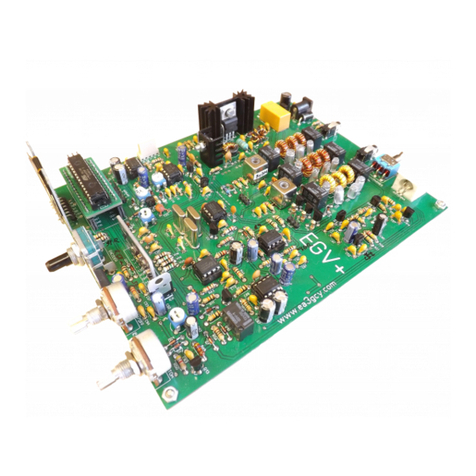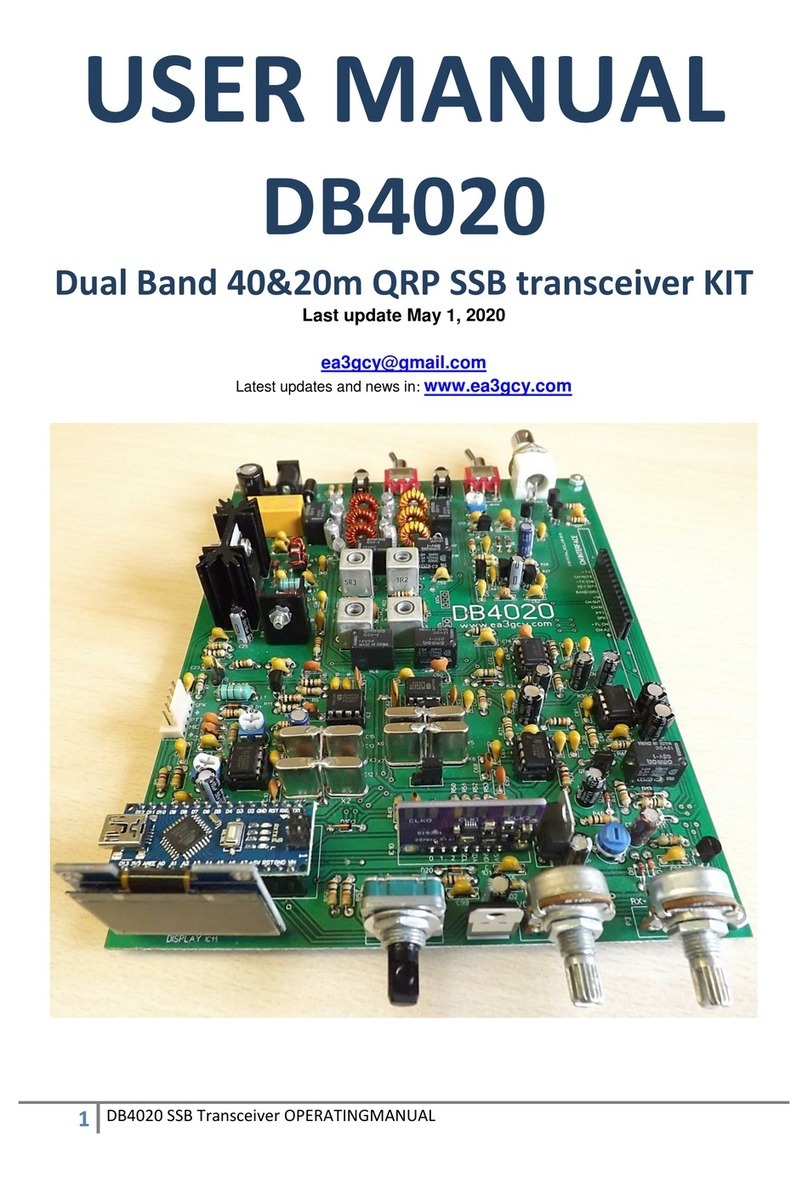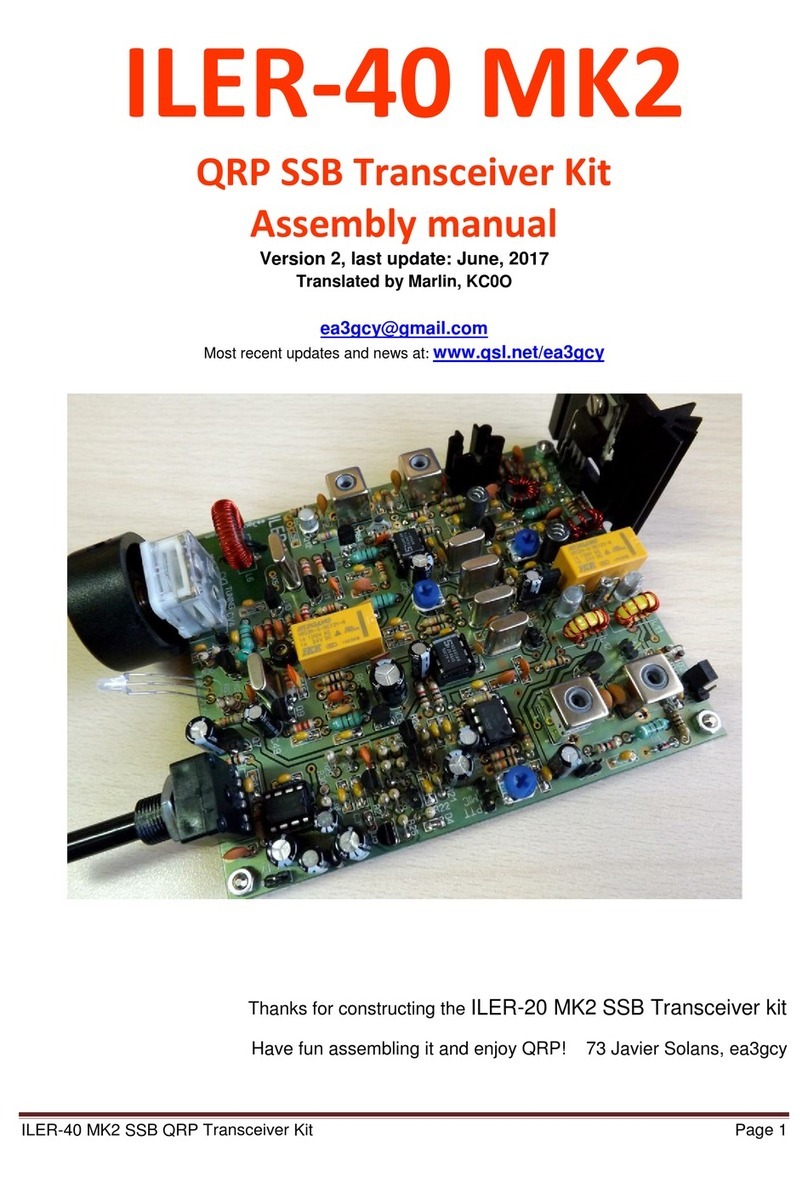
MFT-40 DSB Transceiver Kit Page 2
INTRODUCTION
MFT-40
The MFT-40 “My First Transceiver” is a simple, low-cost DSB (double sideband) transceiver similar to
the famous “Beach-40”, “Micro-40” by VK3YE, “Wee Willy” by VA3IUL, etc. However, the MFT has
improved both the receive and transmit characteristics, and its kit assembly puts the project within the
reach of radio circuit builders of any level.
The MFT-40 is a transceiver designed especially for new builders, for educational use in schools and for
club building projects and the like. However, it is also a very attractive assembly project for experienced
amateurs who like low power and want to get on the air with "minimalist" equipment.
The printed circuit board (PCB) is over-sized for easy location and placement of the components. The
receiver (MFT-RX) can be assembled and put in operation independently of the transmitter, which allows
neophytes to assemble and use the receiver before beginning to work on the transmitter (MFT-TX). The
transmitter cannot operate without the receiver, since the local oscillator is built into the receiver.
The kit can be assembled on a Saturday morning, with time left in the afternoon to go out to the field with
it and make a few QRP contacts.
The MFT-40 incorporates a DC (direct conversion) receiver with a 3-stage front-end passband filter,
followed by a balanced mixer, an audio preamplifier and filter using an operational amplifier, and an
output amplifier for driving a loudspeaker. The local oscillator is based on a 7.2 MHz ceramic resonator
element that allows coverage of a part of the 40m band.
The DSB (double sideband) transmitter uses a DSB generator with input from an economical electret
condenser microphone and three stages of amplification which produce 3-4W to the antenna.
The simple circuits used make it is possible to enjoy amazing QRP contacts.
The optional “ILER-DDS” kit makes it possible to cover the entire band.
The transmitter has a robust design to withstand and work hard in the field!
There are only two controls: RX gain and tuning, which are sufficient for enjoying the pleasure of QRP!
SPECIFICATIONS
GENERAL:
Frequency coverage: ceramic resonator oscillator circuit that tunes from 7.085 to 7.165MHz approx. in
two ranges (modifiable).
Frequency control: Varicap Diode.
Antenna: 50 ohms.
Power supply: 12-14VDC, 25mA in receive (without signal), about 850mA in transmit.
Components: 36 resistors, 2 variable resistors, 67 capacitors, 2 potentiometer (Rx gain/volume and
Tune), 5 IC's, 5 transistors, 2 inductors-chokes, 6 RF transformers, 6 diodes, 1 ceramic resonator.
Front panel controls: Tune and RX gain.
External connections: mic/ptt, speaker jack, antenna, DC input.
Circuit board dimensions: 110x130 mm.

































